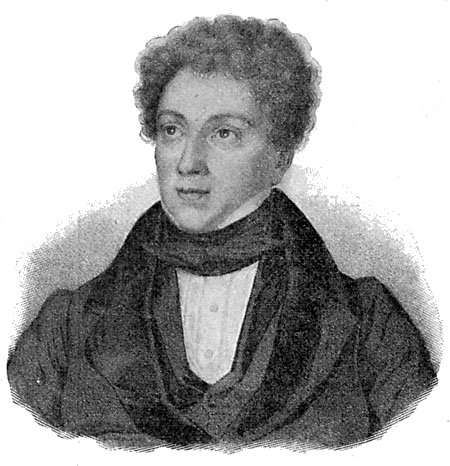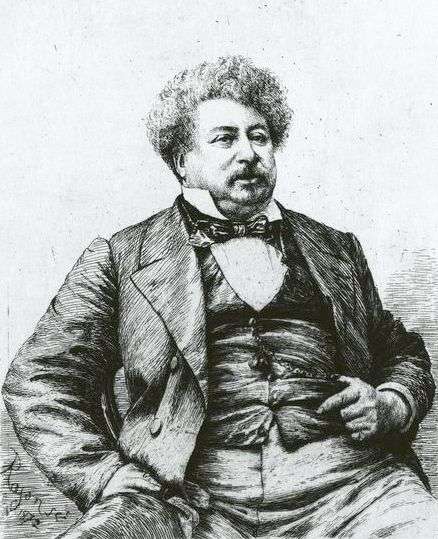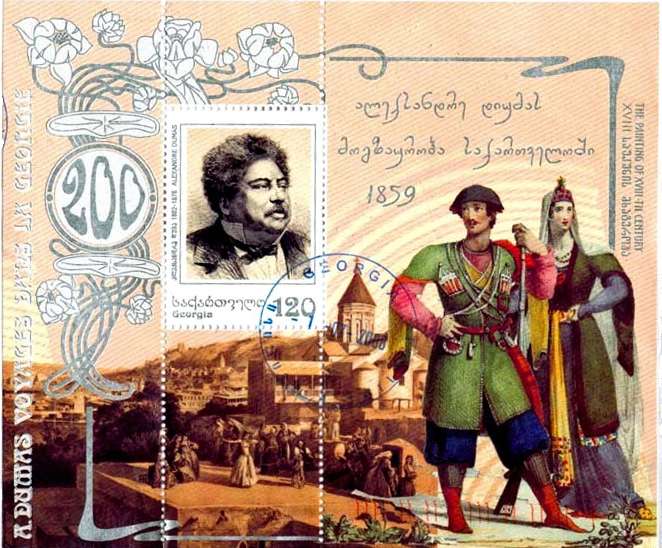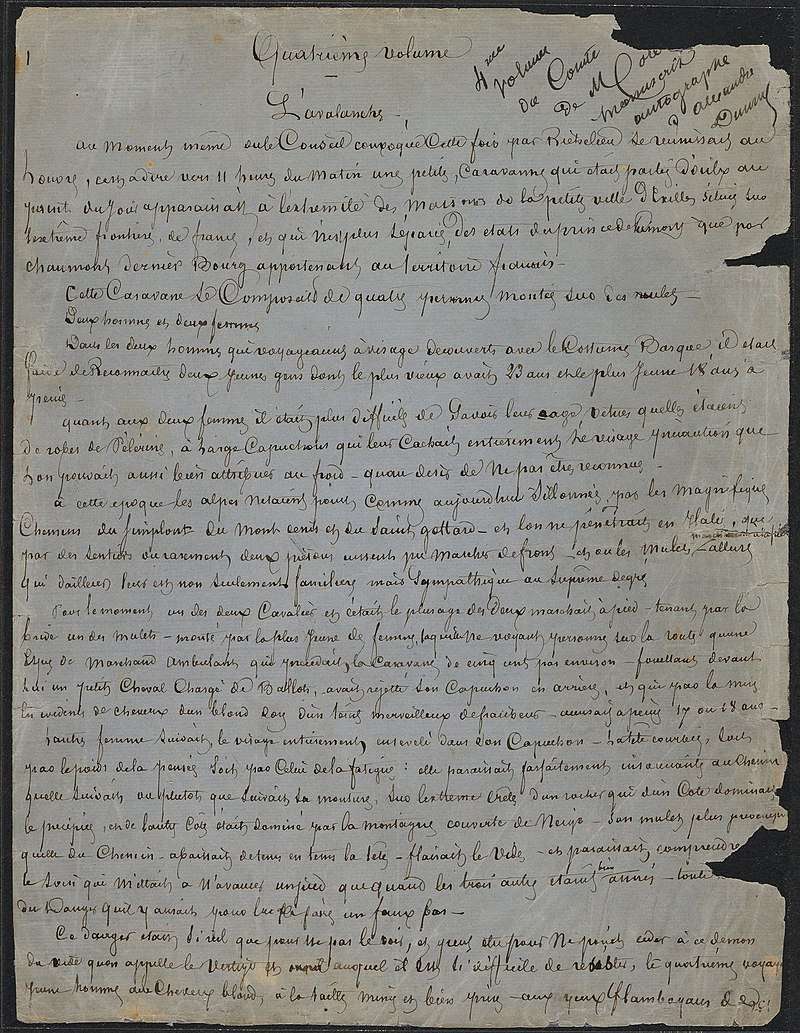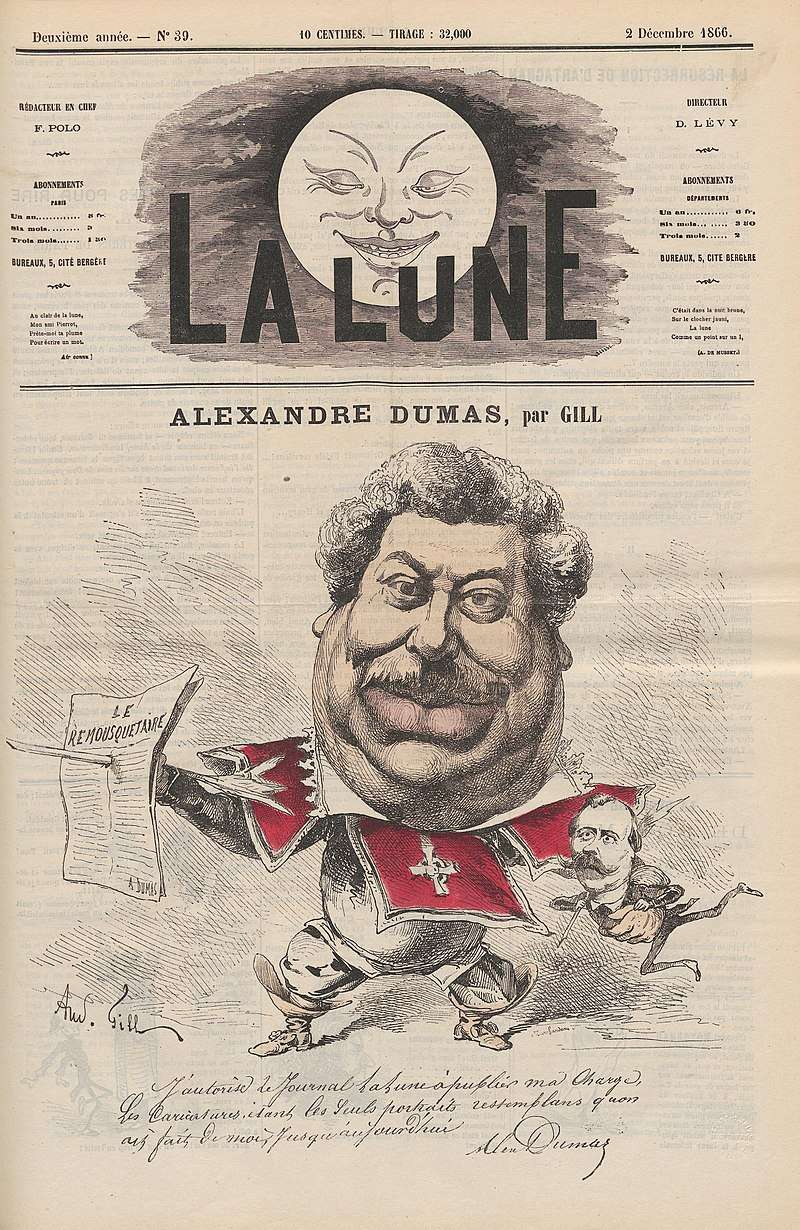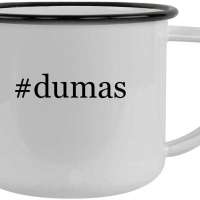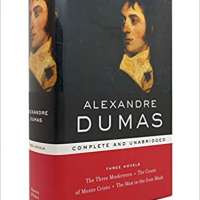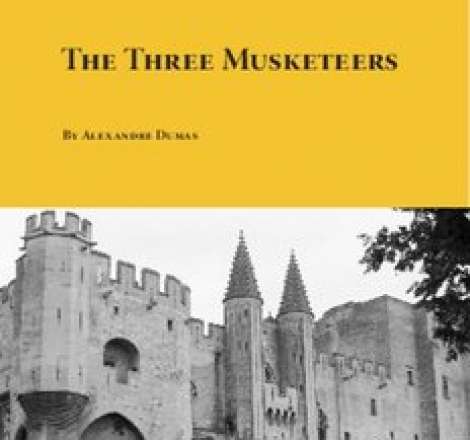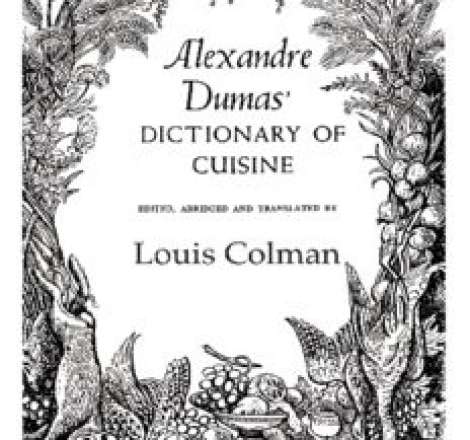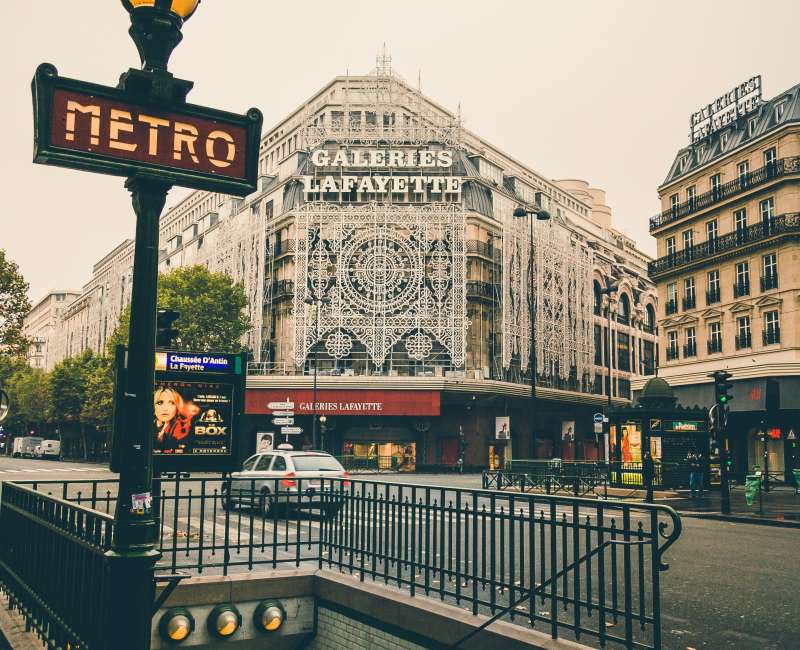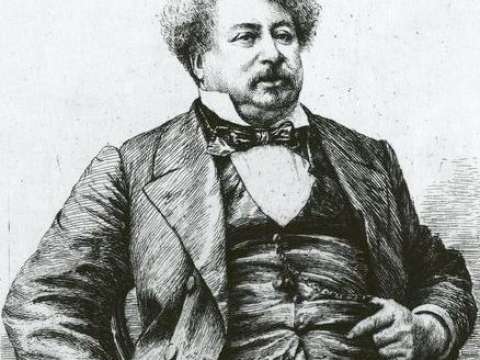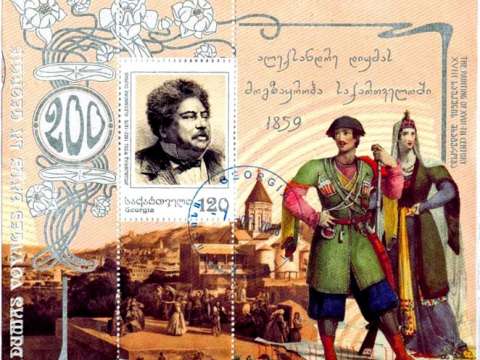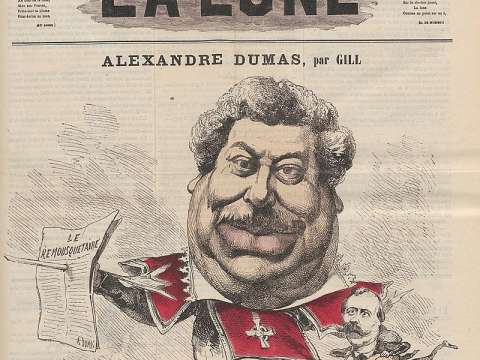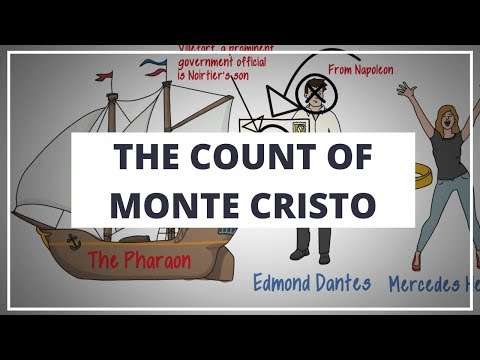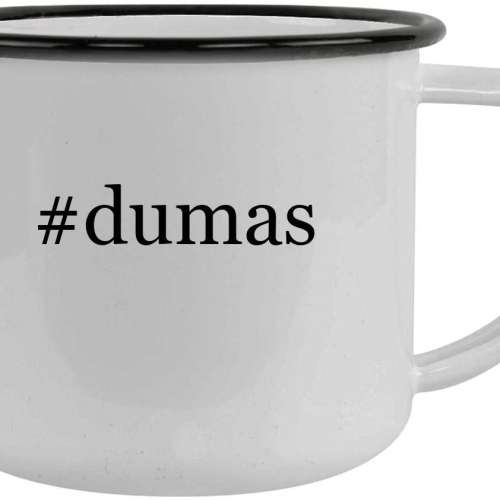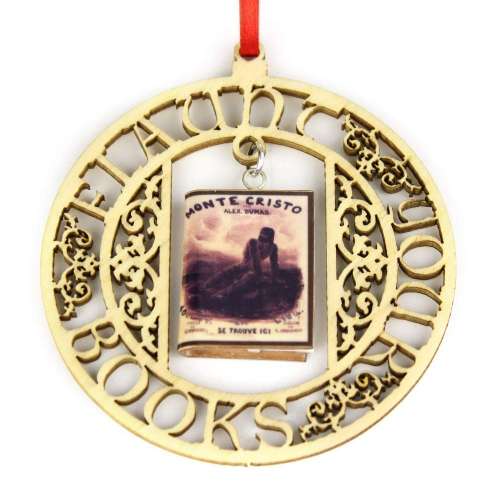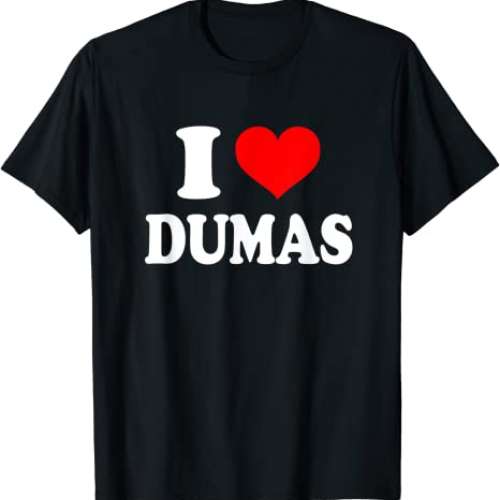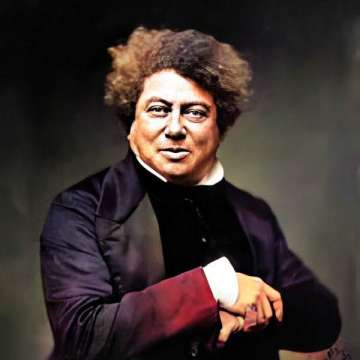

Alexandre Dumas (1802-1870)
I am not proud, but I am happy; and happiness blinds, I think, more than pride.
Alexandre Dumas was a French writer. His works have been translated into many languages, and he is one of the most widely read French authors. Many of his historical novels of high adventure were originally published as serials, including The Count of Monte Cristo, The Three Musketeers, Twenty Years After, and The Vicomte of Bragelonne: Ten Years Later. His novels have been adapted since the early twentieth century into nearly 200 films.
Prolific in several genres, Dumas began his career by writing plays, which were successfully produced from the first. He also wrote numerous magazine articles and travel books; his published works totalled 100,000 pages. In the 1840s, Dumas founded the Théâtre Historique in Paris.
His father, General Thomas-Alexandre Dumas Davy de la Pailleterie, was born in the French colony of Saint-Domingue present-day Haiti to Alexandre Antoine Davy de la Pailleterie, a French nobleman, and Marie-Cessette Dumas, an enslaved woman of African descent. At age 14, Thomas-Alexandre was taken by his father to France, where he was educated in a military academy and entered the military for what became an illustrious career.
Dumas's father's aristocratic rank helped young Alexandre acquire work with Louis-Philippe, Duke of Orléans, then as a writer, a career which led to early success. Decades later, after the election of Louis-Napoléon Bonaparte in 1851, Dumas fell from favour and left France for Belgium, where he stayed for several years, then moved to Russia for a few years before going to Italy. In 1861, he founded and published the newspaper L'Indépendent, which supported Italian unification, before returning to Paris in 1864.
Though married, in the tradition of Frenchmen of higher social class, Dumas had numerous affairs allegedly as many as 40. He was known to have had at least four illegitimate children, although twentieth-century scholars believe it was seven. He acknowledged and assisted his son, Alexandre Dumas, to become a successful novelist and playwright. They are known as Alexandre Dumas père 'father' and Alexandre Dumas fils 'son'. Among his affairs, in 1866, Dumas had one with Adah Isaacs Menken, an American actress then less than half his age and at the height of her career.
The English playwright Watts Phillips, who knew Dumas in his later life, described him as "the most generous, large-hearted being in the world. He also was the most delightfully amusing and egotistical creature on the face of the earth. His tongue was like a windmill – once set in motion, you never knew when he would stop, especially if the theme was himself."
Early life
Dumas Davy de la Pailleterie later known as Alexandre Dumas was born in 1802 in Villers-Cotterêts in the department of Aisne, in Picardy, France. He had two older sisters, Marie-Alexandrine born 1794 and Louise-Alexandrine 1796–1797. Their parents were Marie-Louise Élisabeth Labouret, the daughter of an innkeeper, and Thomas-Alexandre Dumas.
Thomas-Alexandre had been born in the French colony of Saint-Domingue now Haiti, the mixed-race, natural son of the marquis Alexandre Antoine Davy de la Pailleterie, a French nobleman and général commissaire in the artillery of the colony, and Marie-Cessette Dumas, an enslaved woman of Afro-Caribbean ancestry. At the time of Thomas-Alexandre's birth, his father was impoverished. It is not known whether his mother was born in Saint-Domingue or in Africa, nor is it known from which African people her ancestors came.
Brought as a boy to France by his father and legally freed there, Thomas-Alexandre Dumas Davy was educated in a military school and joined the army as a young man. As an adult, Thomas-Alexandre used his mother's name, Dumas, as his surname after a break with his father. Dumas was promoted to general by the age of 31, the first soldier of Afro-Antilles origin to reach that rank in the French army.
Career
While working for Louis-Philippe, Dumas began writing articles for magazines and plays for the theatre. As an adult, he used his slave grandmother's surname of Dumas, as his father had done as an adult. His first play, Henry III and His Courts, produced in 1829 when he was 27 years old, met with acclaim. The next year, his second play, Christine, was equally popular. These successes gave him sufficient income to write full-time.
In 1830, Dumas participated in the Revolution that ousted Charles X and replaced him with Dumas's former employer, the Duke of Orléans, who ruled as Louis-Philippe, the Citizen King. Until the mid-1830s, life in France remained unsettled, with sporadic riots by disgruntled Republicans and impoverished urban workers seeking change. As life slowly returned to normal, the nation began to industrialise. An improving economy combined with the end of press censorship made the times rewarding for Alexandre Dumas's literary skills.

After writing additional successful plays, Dumas switched to writing novels. Although attracted to an extravagant lifestyle and always spending more than he earned, Dumas proved to be an astute marketer. As newspapers were publishing many serial novels, in 1838, Dumas rewrote one of his plays as his first serial novel, Le Capitaine Paul. He founded a production studio, staffed with writers who turned out hundreds of stories, all subject to his personal direction, editing, and additions.
From 1839 to 1841, Dumas, with the assistance of several friends, compiled Celebrated Crimes, an eight-volume collection of essays on famous criminals and crimes from European history. He featured Beatrice Cenci, Martin Guerre, Cesare and Lucrezia Borgia, as well as more recent events and criminals, including the cases of the alleged murderers Karl Ludwig Sand and Antoine François Desrues, who were executed.
Dumas collaborated with Augustin Grisier, his fencing master, in his 1840 novel, The Fencing Master. The story is written as Grisier's account of how he came to witness the events of the Decembrist revolt in Russia. The novel was eventually banned in Russia by Czar Nicholas I, and Dumas was prohibited from visiting the country until after the Czar's death. Dumas refers to Grisier with great respect in The Count of Monte Cristo, The Corsican Brothers, and in his memoirs.
Dumas depended on numerous assistants and collaborators, of whom Auguste Maquet was the best known. It was not until the late twentieth century that his role was fully understood. Dumas wrote the short novel Georges 1843, which uses ideas and plots later repeated in The Count of Monte Cristo. Maquet took Dumas to court to try to get authorial recognition and a higher rate of payment for his work. He was successful in getting more money, but not a by-line.

Dumas's novels were so popular that they were soon translated into English and other languages. His writing earned him a great deal of money, but he was frequently insolvent, as he spent lavishly on women and sumptuous living. Scholars have found that he had a total of 40 mistresses. In 1846, he had built a country house outside Paris at Le Port-Marly, the large Château de Monte-Cristo, with an additional building for his writing studio. It was often filled with strangers and acquaintances who stayed for lengthy visits and took advantage of his generosity. Two years later, faced with financial difficulties, he sold the entire property.
Dumas wrote in a wide variety of genres and published a total of 100,000 pages in his lifetime. He also made use of his experience, writing travel books after taking journeys, including those motivated by reasons other than pleasure. Dumas travelled to Spain, Italy, Germany, England and French Algeria. After King Louis-Philippe was ousted in a revolt, Louis-Napoléon Bonaparte was elected president. As Bonaparte disapproved of the author, Dumas fled in 1851 to Brussels, Belgium, which was also an effort to escape his creditors. In about 1859, he moved to Russia, where French was the second language of the elite and his writings were enormously popular. Dumas spent two years in Russia and visited St. Petersburg, Moscow, Kazan, Astrakhan and Tbilisi, before leaving to seek different adventures. He published travel books about Russia.
In March 1861, the kingdom of Italy was proclaimed, with Victor Emmanuel II as its king. Dumas travelled there and for the next three years participated in the movement for Italian unification. He founded and led a newspaper, Indipendente. While there, he befriended Giuseppe Garibaldi, whom he had long admired and with whom he shared a commitment to liberal republican principles as well as membership within Freemasonry. Returning to Paris in 1864, he published travel books about Italy.
Despite Dumas's aristocratic background and personal success, he had to deal with discrimination related to his mixed-race ancestry. In 1843, he wrote a short novel, Georges, that addressed some of the issues of race and the effects of colonialism. His response to a man who insulted him about his partial African ancestry has become famous. Dumas said:
Personal life
On 1 February 1840, Dumas married actress Ida Ferrier born Marguerite-Joséphine Ferrand 1811–1859. He had numerous liaisons with other women and was known to have fathered at least four children by them:
- Alexandre Dumas, fils 1824–1895, son of Marie-Laure-Catherine Labay 1794–1868, a dressmaker. He became a successful novelist and playwright.
- Marie-Alexandrine Dumas 1831–1878, the daughter of Belle Krelsamer 1803–1875.
- Micaëlla-Clélie-Josepha-Élisabeth Cordier born 1860, the daughter of Emélie Cordier.
- Henry Bauer, the son of a woman whose surname was Bauer.
About 1866, Dumas had an affair with Adah Isaacs Menken, a well-known American actress. She had performed her sensational role in Mazeppa in London. In Paris, she had a sold-out run of Les Pirates de la Savanne and was at the peak of her success.

These women were among Dumas's nearly 40 mistresses found by scholar Claude Schopp, in addition to three natural children.
Along with Victor Hugo, Charles Baudelaire, Gérard de Nerval, Eugène Delacroix and Honoré de Balzac, Dumas was a member of the Club des Hashischins, which met monthly to take hashish at a hotel in Paris. Dumas's "The Count of Monte Cristo" contains several references to hashish.
Death and legacy
At his death in December 1870, Dumas was buried at his birthplace of Villers-Cotterêts in the department of Aisne. His death was overshadowed by the Franco-Prussian War. Changing literary fashions decreased his popularity. In the late twentieth century, scholars such as Reginald Hamel and Claude Schopp have caused a critical reappraisal and new appreciation of his art, as well as finding lost works.
In 1970, the Alexandre Dumas Paris Métro station was named in his honour. His country home outside Paris, the Château de Monte-Cristo, has been restored and is open to the public as a museum.
Researchers have continued to find Dumas works in archives, including the five-act play, The Gold Thieves, found in 2002 by the scholar Réginald Hamel in the Bibliothèque Nationale de France. It was published in France in 2004 by Honoré-Champion.

Frank Wild Reed 1874–1953, a New Zealand pharmacist who never visited France, amassed the greatest collection of books and manuscripts relating to Dumas outside France. The collection contains about 3,350 volumes, including some 2,000 sheets in Dumas's handwriting and dozens of French, Belgian and English first editions. The collection was donated to Auckland Libraries after his death. Reed wrote the most comprehensive bibliography of Dumas.
In 2002, for the bicentenary of Dumas's birth, French President Jacques Chirac held a ceremony honouring the author by having his ashes re-interred at the mausoleum of the Panthéon of Paris, where many French luminaries were buried. The proceedings were televised: the new coffin was draped in a blue velvet cloth and carried on a caisson flanked by four mounted Republican Guards costumed as the four Musketeers. It was transported through Paris to the Panthéon. In his speech, President Chirac said:
Chirac acknowledged the racism that had existed in France and said that the re-interment in the Pantheon had been a way of correcting that wrong, as Alexandre Dumas was enshrined alongside fellow great authors Victor Hugo and Émile Zola. Chirac noted that although France has produced many great writers, none has been so widely read as Dumas. His novels have been translated into nearly 100 languages. In addition, they have inspired more than 200 motion pictures.
In June 2005, Dumas's last novel, The Knight of Sainte-Hermine, was published in France featuring the Battle of Trafalgar. Dumas described a fictional character killing Lord Nelson Nelson was shot and killed by an unknown sniper. Writing and publishing the novel serially in 1869, Dumas had nearly finished it before his death. It was the third part of the Sainte-Hermine trilogy.
Claude Schopp, a Dumas scholar, noticed a letter in an archive in 1990 that led him to discover the unfinished work. It took him years to research it, edit the completed portions, and decide how to treat the unfinished part. Schopp finally wrote the final two-and-a-half chapters, based on the author's notes, to complete the story. Published by Éditions Phébus, it sold 60,000 copies, making it a best seller. Translated into English, it was released in 2006 as The Last Cavalier, and has been translated into other languages.
Schopp has since found additional material related to the Sainte-Hermine saga. Schopp combined them to publish the sequel Le Salut de l'Empire in 2008.
Works
Fiction
Christian history
- Acté of Corinth; or, The convert of St. Paul. a tale of Greece and Rome. 1839, a novel about Rome, Nero, and early Christianity.
- Isaac Laquedem 1852–53, incomplete
High adventure
Alexandre Dumas wrote numerous stories and historical chronicles of high adventure. They included the following:
- Captain Paul, 1838, his first serial novel.
- Othon the Archer 1840
- Captain Pamphile, 1839
- The Fencing Master, 1840
- Castle Eppstein; The Spectre Mother, 1843
- Amaury 1843
- The Corsican Brothers, 1844
- The Black Tulip, 1850
- Olympe de Cleves 1851–52
- Catherine Blum 1853–54
- The Mohicans of Paris, 1854
- The Last Vendee, or the She-Wolves of Machecoul, 1859. A romance not about werewolves.
- La Sanfelice 1864, set in Naples in 1800
- Pietro Monaco, sua moglie Maria Oliverio ed i loro complici, 1864. An Appendix to Ciccilla by Peppino Curcio
Fantasy
- The Nutcracker Histoire d'un casse-noisette, 1844: a revision of Hoffmann's story The Nutcracker and the Mouse King, later set by composer Pyotr Ilyich Tchaikovsky to music for a ballet also called The Nutcracker.
- The Pale Lady 1849 A vampire tale about a Polish woman who is adored by two very different brothers.
- The Wolf Leader Le Meneur de loups, 1857. One of the first werewolf novels ever written.
In addition, Dumas wrote many series of novels:
Monte Cristo
- Georges 1843: The protagonist of this novel is a man of mixed race, a rare allusion to Dumas's own African ancestry.
- The Count of Monte Cristo, 1844–46
Louis XV
- The Conspirators, 1843 adapted by Paul Ferrier for an 1896 opéra comique by Messager.
- The Regent's Daughter, 1845. Sequel to The Conspirators.
The D'Artagnan Romances
The d'Artagnan Romances:
- The Three Musketeers, 1844
- Twenty Years After, 1845
- The Vicomte de Bragelonne, sometimes called Ten Years Later, 1847. When published in English, it was usually split into three parts: The Vicomte de Bragelonne, Louise de la Valliere, and The Man in the Iron Mask, of which the last part is the best known. A third sequel, The Son of Porthos, 1883 [a.k.a. The Death of Aramis] was published under the name of Alexandre Dumas; however, the real author was Paul Mahalin.
Related Books
- Louis XIV and His Century, 1844
- The Women's War, 1845: follows Baron des Canolles, a naïve Gascon soldier who falls in love with two women.
- The Count of Moret; The Red Sphinx; or, Richelieu and his rivals, 1865–66
The Valois romances
The Valois were the royal house of France from 1328 to 1589, and many Dumas romances cover their reign. Traditionally, the so-called "Valois Romances" are the three that portray the Reign of Queen Marguerite, the last of the Valois. Dumas, however, later wrote four more novels that cover this family and portray similar characters, starting with François or Francis I, his son Henry II, and Marguerite and François II, sons of Henry II and Catherine de' Medici.

- La Reine Margot, also published as Marguerite de Valois 1845
- La Dame de Monsoreau 1846 later adapted as a short story titled, "Chicot the Jester"
- The Forty-Five Guardsmen 1847 Les Quarante-cinq
- Ascanio 1843. Written in collaboration with Paul Meurice, it is a romance of Francis I 1515–1547, but the main character is Italian artist Benvenuto Cellini. The opera Ascanio was based on this novel.
- The Two Dianas Les Deux Diane, 1846, is a novel about Gabriel, comte de Montgomery, who mortally wounded King Henry II and was lover to his daughter, Diana de Castro. Although published under Dumas's name, it was wholly or mostly written by Paul Meurice.
- The Page of the Duke of Savoy, 1855 is a sequel to The Two Dianas 1846, and it covers the struggle for supremacy between the Guises and Catherine de Médicis, the Florentine mother of the last three Valois kings of France and wife of Henry II. The main character in this novel is Emmanuel Philibert, Duke of Savoy.
- The Horoscope: a romance of the reign of François II 1858, covers François II, who reigned for one year 1559–60 and died at the age of 16.
The Marie Antoinette romances
The Marie Antoinette romances comprise eight novels. The unabridged versions (normally 100 chapters) or more comprise only five books (numbers 1, 3, 4, 7 and 8); the short versions (50 chapters or less) number eight in total:
- Joseph Balsamo Mémoires d'un médecin: Joseph Balsamo, 1846–48 a.k.a. Memoirs of a Physician, Cagliostro, Madame Dubarry, The Countess Dubarry, or The Elixir of Life. Joseph Balsamo is about 1000 pages long, and is usually published in two volumes in English translations: Vol 1. Joseph Balsamo and Vol 2. Memoirs of a Physician. The long unabridged version includes the contents of book two, Andrée de Taverney; the short abridged versions usually are divided in Balsamo and Andrée de Taverney as completely different books.
- Andrée de Taverney, or The Mesmerist's Victim
- The Queen's Necklace Le Collier de la Reine, 1849−1850
- Ange Pitou 1853 a.k.a. Storming the Bastille or Six Years Later. From this book, there are also long unabridged versions which include the contents of book five, but there are many short versions that treat "The Hero of the People" as a separated volume.
- The Hero of the People
- The Royal Life Guard or The Flight of the Royal Family.
- The Countess de Charny La Comtesse de Charny, 1853–1855. As with other books, there are long unabridged versions which include the contents of book six; but many short versions that leave contents in The Royal Life Guard as a separate volume.
- Le Chevalier de Maison-Rouge 1845 a.k.a. The Knight of the Red House, or The Knight of Maison-Rouge
The Sainte-Hermine trilogy
Robin Hood
- The Prince of Thieves Le Prince des voleurs, 1872, posthumously. About Robin Hood and the inspiration for the 1948 film The Prince of Thieves.
- Robin Hood the Outlaw Robin Hood le proscrit, 1873, posthumously. Sequel to Le Prince des voleurs
Drama
Although best known now as a novelist, Dumas first earned fame as a dramatist. His Henri III et sa cour 1829 was the first of the great Romantic historical dramas produced on the Paris stage, preceding Victor Hugo's more famous Hernani 1830. Produced at the Comédie-Française and starring the famous Mademoiselle Mars, Dumas's play was an enormous success and launched him on his career. It had fifty performances over the next year, extraordinary at the time. Dumas's works included:
- The Hunter and the Lover 1825
- The Wedding and the Funeral 1826
- Henry III and his court 1829
- Christine – Stockholm, Fontainebleau, and Rome 1830
- Napoleon Bonaparte or Thirty Years of the History of France 1831
- Antony 1831 – a drama with a contemporary Byronic hero – is considered the first non-historical Romantic drama. It starred Mars' great rival Marie Dorval.
- Charles VII at the Homes of His Great Vassals Charles VII chez ses grands vassaux, 1831. This drama was adapted by the Russian composer César Cui for his opera The Saracen.
- Teresa 1831
- La Tour de Nesle 1832, a historical melodrama
- The Memories of Anthony 1835
- The Chronicles of France: Isabel of Bavaria 1835
- Kean 1836, based on the life of the notable late English actor Edmund Kean. Frédérick Lemaître played him in the production.
- Caligula 1837
- Miss Belle-Isle 1837
- The Young Ladies of Saint-Cyr 1843
- The Youth of Louis XIV 1854
- The Son of the Night – The Pirate 1856 with Gérard de Nerval, Bernard Lopez, and Victor Sejour
- The Gold Thieves after 1857: an unpublished five-act play. It was discovered in 2002 by the Canadian scholar Reginald Hamel, who was researching in the Bibliothèque Nationale de France. The play was published in France in 2004 by Honoré-Champion. Hamel said that Dumas was inspired by a novel written in 1857 by his mistress Célèste de Mogador.
Dumas wrote many plays and adapted several of his novels as dramas. In the 1840s, he founded the Théâtre Historique, located on the Boulevard du Temple in Paris. The building was used after 1852 by the Opéra National established by Adolphe Adam in 1847. It was renamed the Théâtre Lyrique in 1851.
Nonfiction
Dumas was a prolific writer of nonfiction. He wrote journal articles on politics and culture and books on French history.

His lengthy Grand Dictionnaire de cuisine Great Dictionary of Cuisine was published posthumously in 1873. A combination of encyclopaedia and cookbook, it reflects Dumas's interests as both a gourmet and an expert cook. An abridged version the Petit Dictionnaire de cuisine, or Small Dictionary of Cuisine was published in 1883.
He was also known for his travel writing. These books included:
- Impressions de voyage: En Suisse Travel Impressions: In Switzerland, 1834
- Une Année à Florence A Year in Florence, 1841
- De Paris à Cadix From Paris to Cadiz, 1847
- Montevideo, ou une nouvelle Troie, 1850 The New Troy, inspired by the Great Siege of Montevideo
- Le Journal de Madame Giovanni The Journal of Madame Giovanni, 1856
- Travel Impressions in the Kingdom of Napoli/Naples Trilogy:
- Impressions of Travel in Sicily Le Speronare Sicily – 1835, 1842
- Captain Arena Le Capitaine Arena Italy – Aeolian Islands and Calabria – 1835, 1842
- Impressions of Travel in Naples Le Corricolo Rome – Naples – 1833, 1843
- Travel Impressions in Russia – Le Caucase Original edition: Paris 1859
- Adventures in Czarist Russia, or From Paris to Astrakhan Impressions de voyage: En Russie; De Paris à Astrakan: Nouvelles impressions de voyage 1858, 1859–1862
- Voyage to the Caucasus Le Caucase: Impressions de voyage; suite de En Russie 1859, 1858–1859
- The Bourbons of Naples Italian: I Borboni di Napoli, 1862 7 volumes published by Italian newspaper L'Indipendente, whose director was Dumas himself.
Dumas Society
French historian Alain Decaux founded the "Société des Amis d'Alexandre Dumas" The Society of Friends of Alexandre Dumas in 1971. As of August 2017 its president is Claude Schopp. The purpose in creating this society was to preserve the Château de Monte-Cristo, where the society is currently located. The other objectives of the Society are to bring together fans of Dumas, to develop cultural activities of the Château de Monte-Cristo, and to collect books, manuscripts, autographs and other materials on Dumas.
Tribute
On 28 August 2020, Google celebrated Dumas with a Google Doodle.
More facts
The Count of Monte Cristo (2002)
The Three Musketeers (2011)
The Man in the Iron Mask (1998)

